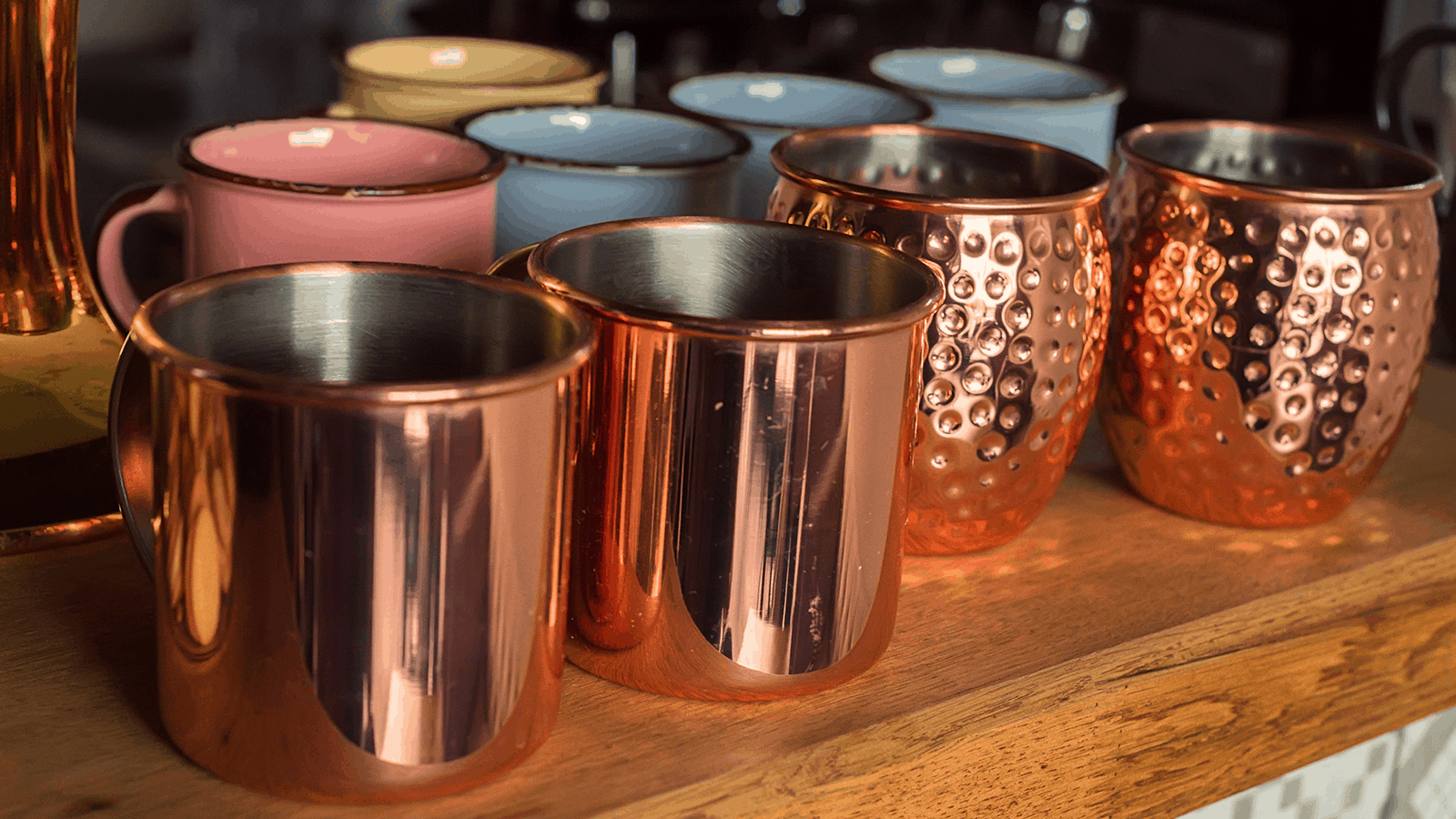Drinking out of a copper cup might seem a little weird, but doing so will provide important health benefits for your body. Water gets a positive charge from copper, and when copper leeches into water, it adds antimicrobial, anti-inflammatory, anticancer, and antioxidant properties. The study that revealed this information also found that storing contaminated water in a copper cup for 16 hours dramatically reduced the amount of harmful microbes in the water.
People in developing countries could have access to clean drinking water if they use copper cups to store their water. This study is truly groundbreaking and could change millions of people’s lives.
In addition to providing clean drinking water, copper can eliminate infection risk in hospitals. In preliminary results of a multi-site clinical trial in the United States, researchers found that copper surfaces in hospitals killed 97% of harmful bacteria that can result in infection. Just because of the copper surfaces alone, the study showed a 40% decrease in infection risk.
Now that you know the power behind copper, we will go over a few important benefits of drinking water out of a copper cup. Even if you don’t live in a developing country or frequently visit the hospital, a copper cup can be a positive addition in your life.
Here are some benefits of drinking from a copper cup:
“If you hold water in a copper bowl, preferably overnight or for at least four hours, the water takes certain qualities from the copper that are primarily good for your liver, but also for your health and energy in general.” – Sadhguru, Indian yogi, mystic, and philanthropist
1. It improves the digestive system.
For the best results, drink water from a copper cup when you first get up in the morning. Drinking water when you wake up stimulates the digestive system and helps eliminate toxins. When you drink from a copper cup, it stimulates something called peristalsis, or the contraction and relaxation of the stomach, which helps your body digest food. During detoxification, your body will eliminate harmful bacteria and reduce inflammation, which will improve your digestive functioning. If you have digestive issues, drinking from a copper cup could prove instrumental in your recovery.
2. A copper cup helps boost your immune system.
Because of the antioxidants present in copper, drinking water from a copper cup regularly can strengthen your immunity. Copper aids in different enzymatic processes that promote endothelial growth, or tissue healing. Because copper helps eliminate harmful bacteria, it can help give your immune system a boost and keep you healthy.
3. It helps you lose weight.
Copper can play an important role in your weight loss by helping to heal the thyroid gland and break down body fat. Copper actually helps with the synthesis of an important coenzyme in the body called adenosine triphosphate, or ATP. Otherwise known as the “molecular unit of currency,” it basically helps give the body energy. Therefore, when you drink water from a copper cup, you will have more energy, which can aid in weight loss.
4. Copper cups can ward off cancer.
Drinking from a copper cup can help fight cancer because of the antioxidants present in copper. Antioxidants help fight off free radicals, which allows oxygen to move through the cells, therefore warding off cancer. While there aren’t many studies available regarding copper’s use for cancer, it holds a lot of promise for the future of cancer treatment.
5. It stimulates your brain.
Copper aids in the synthesis of phospholipids, which helps to form myelin sheaths over neurons in the brain. These sheaths allow the impulses to move from one neuron to another in the brain, and the faster these impulses move, the more efficiently your brain can function. The better your brain functions, the more you can engage in positive thinking which will only increase the benefits of drinking from the copper cup. Drinking from a copper cup can also help prevent seizures and other brain-related ailments.
Other notable health benefits include: healing wounds quicker, slowing down aging, maintaining cardiovascular health and lowering blood pressure, reducing or eliminating arthritis and inflamed joints, warding off anemia, aiding in melanin production and promoting healthy skin.
Final thoughts
If you don’t already drink water out of a copper cup, you should definitely start due to all the health benefits you will receive. It might seem strange at first, but once you notice how great you feel, it will become second nature. You can look on popular sites such as Amazon or Ebay for a quality copper cup.
https://youtu.be/dDn84WupgBA











